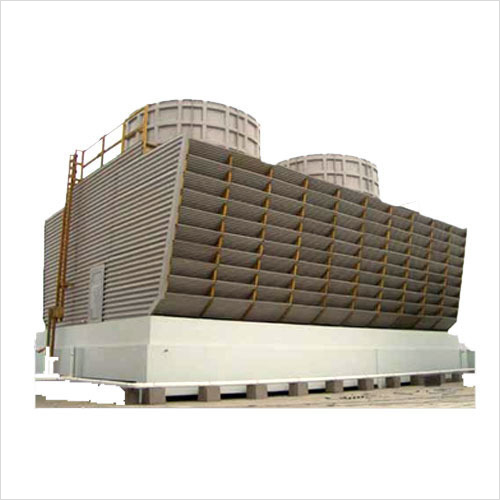Sustainable Construction
Lorem ipsum dolor...

Timber cooling towers, also known as wooden cooling towers, are a type of heat exchange system used in industrial processes for removing waste heat from power plants, refineries, and other large-scale facilities. These towers are constructed primarily using wood and provide a natural and sustainable cooling solution.
Design and Construction : Timber cooling towers are typically made of treated wood, such as cedar or pine, which is resistant to decay, rot, and water damage. The tower consists of a framework of wooden beams or columns that support a series of wooden slats or louvers. These slats allow air to flow through the tower and aid in the cooling process.
Cooling Process : The cooling process in timber cooling towers involves the circulation of hot water from an industrial process, such as a power plant, through the tower. As the hot water flows over the wooden slats, it comes into contact with ambient air. The water evaporates and cools down through the natural process of evaporation. The cooled water is then collected at the bottom of the tower and recirculated back into the industrial process.
Environmental Sustainability : The use of wood as the primary construction material makes timber cooling towers more environmentally friendly compared to towers made of steel or concrete.
Cost-Effectiveness : Wooden construction is generally less expensive than other materials, reducing the initial construction costs of the tower.
Thermal Efficiency : The natural evaporation process in timber cooling towers provides efficient cooling and effective heat transfer, making them suitable for various industrial applications.
Noise Reduction : The use of wood as a construction material helps to absorb and dampen noise, resulting in quieter operation compared to other types of cooling towers.
Aesthetics : Timber cooling towers can blend well with natural surroundings and architectural designs, offering a visually pleasing appearance.
Maintenance and Durability : Proper maintenance is crucial for the longevity of timber cooling towers. Regular inspections, treating the wood with protective coatings, and monitoring for any signs of decay or damage are essential to ensure their efficient operation. However, timber cooling towers may require more frequent maintenance and have a shorter lifespan compared to towers made of materials like concrete or fiberglass.
Timber cooling towers, also known as wooden cooling towers, are primarily used in industries where cooling of water or process fluids is required. While they were commonly used in the past, the industry has shifted towards more modern materials such as concrete and fiberglass for cooling tower construction due to their durability and longevity. Nevertheless, timber cooling towers are still found in certain industries, particularly in applications where corrosion resistance is not a significant concern.
Here are a few industries where timber cooling towers have been used
Power Generation : Timber cooling towers have been used in power plants, especially in older facilities. They help dissipate heat generated during power generation processes, such as in thermal power plants, where steam turbines are employed.
Petrochemical Industry : Some petrochemical plants may still have timber cooling towers in use. They aid in cooling various processes involved in the production of chemicals and petroleum products.
Pulp and Paper Industry : Timber cooling towers have historically been used in the pulp and paper industry to cool water and process fluids used in paper manufacturing and other related processes.
Steel Mills : In certain steel mills, timber cooling towers have been utilized for cooling purposes. They assist in cooling water used in steel production, such as in cooling down equipment or reducing the temperature of wastewater.
Textile Industry : Textile manufacturing facilities have used timber cooling towers in the past to cool down water used in textile dyeing and other processes.
Food and Beverage Industry : Some food processing and beverage production facilities have employed timber cooling towers for cooling purposes. However, modern food processing plants typically prefer other materials due to stricter hygiene standards and the need for corrosion resistance.